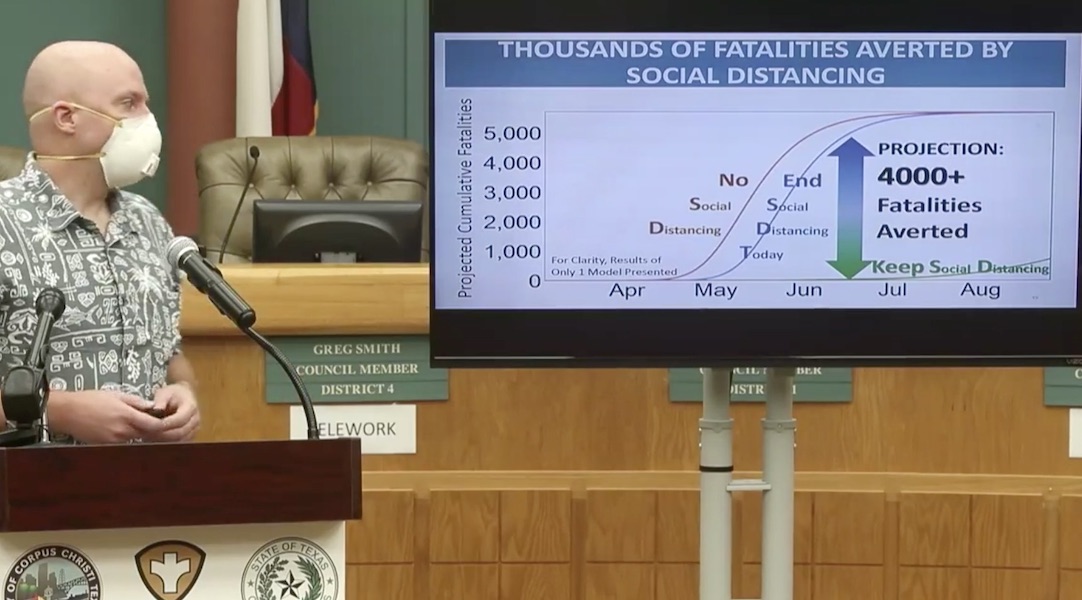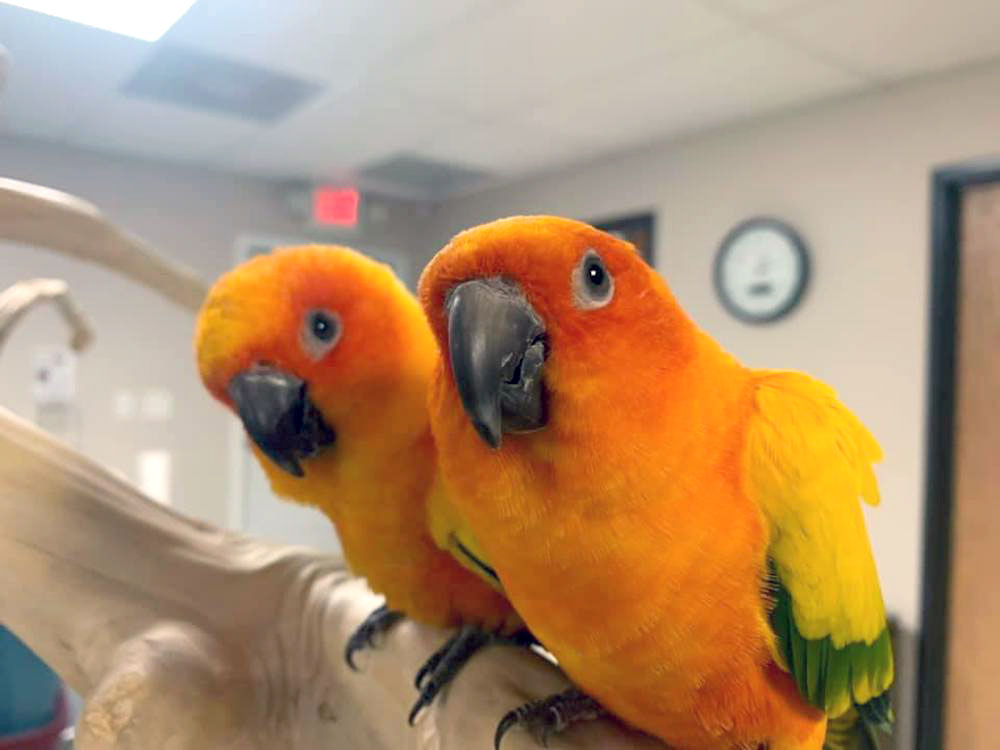
Professor Christopher Bird of Texas A&M University-Corpus Christi explains a prediction model the university created demonstrating how social distancing orders can save lives. Screen capture
If Corpus Christi lifted social distancing orders today, between five and 20 people in the area would die by the middle of June, according to a prediction model put together by Texas A&M University-Corpus Christi professors. A team of 15-20 people, including representatives of Nueces County, the city of Corpus Christi, and the Nueces County Hospital District, created the models based on similar ones used worldwide to predict the effects of COVID-19 on different populations.
“We wanted to show the community why it matters to follow the national, state, and local orders on social distancing,” said Corpus Christi City Manager Peter Zanoni as he introduced two TAMU-CC professors on hand to explain the models at the joint city/county daily news briefing at City Hall on Friday, April 10. “This is only one of many we will share with the community as days and weeks go by.”
Professors Philippe Tissot and Christopher Bird donned gloves and face masks at the podium in City Hall as they explained a slideshow presentation.
The model is based on an upper transmission ratio of four, meaning for every infected person, four more would contract the disease. That’s in a worst-case scenario.
“You stop a pandemic by putting it out before it gets out of control,” Bird said. “The goal here is to get the number below one to hold the disease in check until vaccines come into play to stop it.”
Social distancing is the most effective way to change the transmission ratio number. The presentation used three models as comparison points: no social distancing, stopping social distancing now, continuing social distancing for the foreseeable future.
Bird also explained that social distancing in this case includes all measures that communities are taking to slow the spread of the respiratory disease: obsessive hand washing, not touching faces, staying at home, and running lab tests so infected people can be isolated.
With no social distancing, 300,000 people — 90 percent of the Coastal Bend population — would most likely become infected. If social distancing were stopped today, that number would be 200,000. Continuing social distancing for now could lead to 87,000 people becoming infected, but it also could be less.
“Social distancing prevents a disaster in hospitals,” Bird said. “Social distancing buys us some time.”
Social distancing using these numbers averts 4,000 deaths in the Coastal Bend.
“Social distancing leads to substantial reductions and delays in the number of infections, hospital and ICU overflows, and fatalities,” Bird continued. “Our conclusion is that it is too soon to stop social distancing. The best way to put out a fire is to not let it turn into a forest fire. Once you let it get out of control, it is very hard to rein it in.”
Zanoni said TAMU-CC would continue to run models on numbers as they changed and make several more presentations over the upcoming weeks.
“The data shows some pretty dramatic impacts,” Zanoni said. “It shows why staying at home matters.”
The presentation will be available on the joint city/county web page.
For more tips on how to keep yourself, your workspace, and your home safe, visit the COVID-19 resources webpage at CCBizNews.com/covid-19. You’ll also find information on the latest news, closures, cancellations, and public orders along with informational links to the Centers for Disease Control and Prevention and the World Health Organization.
If you think you have the coronavirus, please contact the Corpus Christi-Nueces County Public Health District at 361-826-7200, and a representative will give you instructions. Check the city’s webpage for more information.





